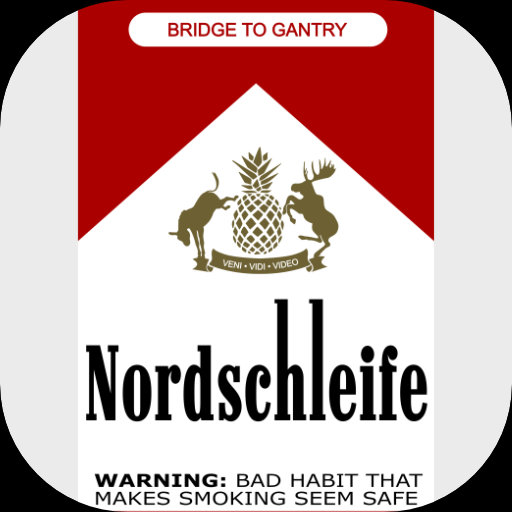It’s the most powerful production M-Car ever with 635hp. It has the best power-to-weight ratio of any M-Car ever, with only 3kg per horsepower. And now it’s the fastest M5 to ever lap the Nürburgring Nordschleife. So why don’t I automatically and unconditionally love the new 2022 BMW M5 CS?
Maybe it’s the kerb-weight of 1900kg (EEC, including fuel, driver and luggage) that leaves me cold? Maybe it’s the switchable X-Drive system and ZF 8-speed automatic gearbox? I’m not sure. I love Jaguar’s Project 8, and that has two very similar technologies. This BMW is also full of gorgeous details, as you can see below:






Heaps of carbon-fibre, those corny, but gorgeous, Nürburgring-emblazoned seats that will look totally out of place for 99.9% of the global owners. The steering wheel is a work of art too. The CS might cost mega bucks (over €180,000!), but at least it’s lighter than the stock M5. Though saving 70kg from nearly two-tonnes, is not near as impressive as saving 110kg from a 1.5-tonne car (cough-E46-CSL-cough).
Then I watched Christian Giving-It-Hard (Gebhardt) ‘persuading’ the M5 CS into a very fast 7m29s Nordschleife laptime…
It’s like watching an elephant being whipped by a monkey. The elephant might be coaxed into climbing on to a table and performing tricks today, but tomorrow it might just sit on you. The big grey M5 has a similar air of co-operation. I had high expectations of this car, and on paper, it delivers.
But emotionally, I’m left kinda flat. Kinda like whatever this car parks on top of.
Does a €180,000, 70kg-lighter M5 with the turbos turned up and only 4-seats leave you excited?
Full BMW Press Release below.
BMW M GmbH is expanding its ranks of ultra-sporty CS models with the introduction of the BMW M5 CS (fuel consumption, combined: 11.3 – 11.1 l/100 km [25.0 – 25.5 mpg imp] correspond to NEDC; 11,3 – 10,9 l/100 km correspond to WLTP, CO2 emissions, combined: 258 – 253 g/km correspond to NEDC, 257 – 248 g/km correspond to WLTP). The limited-run, exclusive special-edition model treats four people to an extraordinary driving experience and blends standout performance attributes with an exclusive and luxurious appearance.
The 4.4-litre V8 engine with 467 kW/635 hp makes the BMW M5 CS the most powerful car in the history of BMW M. Standard features include the eight-speed M Steptronic transmission with Drivelogic and the M xDrive all-wheel-drive system, which also offers a 2WD mode for pure rear-wheel drive.
Rigorously applied lightweight design enables a weight saving of some 70 kilograms over the BMW M5 Competition (fuel consumption, combined: 11.3 – 11.1 l/100 km [26.7 – 26.9 mpg imp] correspond to NEDC; 11,3 -10,9 l/100 km correspond to WLTP; CO2 emissions, combined: 259 – 254 g/km correspond to NEDC; 259 – 249 g/km correspond to WLTP). With retuned bearing springs at the front and rear axle and further refined damper control, the chassis has been adapted to the lower vehicle weight and the increased performance potential of the standard mixed-size Pirelli P Zero Corsa track tyres (front: 275/35 R 20, rear: 285/35 R 20).
The BMW M5 CS sprints from 0 – 100 km/h (62 mph) in just 3.0 seconds, and from 0 – 200 km/h (124 mph) in 10.3 seconds. Top speed is an electronically governed 305 km/h (189 mph).
The exceptional driving experience on board the BMW M5 CS can be enjoyed by four people – the driver and front passenger in M Carbon seats and two other passengers in the individual rear seats. The black Merino leather covers (fine-grain for the front seats) also feature eye-catching contrasting panels and decorative stitching in Mugello Red. The integral head restraints – with illuminated M5 logos for the front seats – display an outline of the legendary Nürburgring circuit.
The centre marker perforation with red background on the M Alcantara steering wheel is a classical racing car touch; the gearshift paddles are made from carbon fibre and the steering wheel spokes have Black Chrome trim.
A fixed lightweight cover on the centre console replaces the usual armrest with opening lid. Its black Merino leather is complemented by red double stitching. The colour red is used again for the “CS” badging on the instrument panel and between the bucket-style seats in the rear.
The BMW kidney grille surround on the BMW M5 CS, the “M5 CS” badges on the kidney grille, the M gills on the front wings and the boot lid are finished in the bold colour shade Gold Bronze, as are the 20‑inch M forged wheels in Y-spoke design (front: 9.5 J x 20, rear: 10.5 J x 20). The door sill finishers come with illuminated “M5 CS” badges.
The L-shaped light tubes of the BMW Laser headlights illuminate yellow instead of white when low beam, high beam or the Welcome Light is switched on, bringing successful GT racing cars to mind.
The bonnet, front splitter, exterior mirror caps, rear spoiler, rear diffuser, M Power engine compartment cover and intake silencer are made from carbon fibre-reinforced plastic (CFRP). Some elements feature exposed carbon fibre.
Standard specification for the M5 CS includes its stainless-steel sports exhaust system with four unadorned tailpipes and the M Carbon ceramic brakes, whose callipers are painted in Red as standard or Gold as an option.
Available alongside the Brands Hatch Grey metallic paint shade are the exclusive BMW Individual matt paint finishes Frozen Brands Hatch Grey metallic and Frozen Deep Green metallic.
The market launch of the new BMW M5 CS will get underway in spring 2021; in Germany it will be priced at 180,400 euros.
The fuel consumption and CO2 emissions figures are determined according to the European Regulation (EC) 715/2007 in the version applicable. The figures refer to a vehicle with basic configuration in Germany. The range shown considers the different sizes of the selected wheels/tyres and the selected items of optional equipment, and may vary during configuration.
The values are based on the new WLTP test cycle and are translated back into NEDC-equivalent values in order to ensure comparability between the vehicles. With respect to these vehicles, for vehicle-related taxes or other duties based (at least inter alia) on CO2 emissions, the CO2 values may differ from the values stated here (depending on national legislation).
Further information on official fuel consumption figures and specific CO2 emission values of new passenger cars is included in the following guideline: ‘Leitfaden über den Kraftstoffverbrauch, die CO2 Emissionen und den Stromverbrauch neuer Personenkraftwagen’ (Guide to the fuel economy, CO2 emissions and electric power consumption of new passenger cars), which can be obtained free of charge from all dealerships, from Deutsche Automobil Treuhand GmbH (DAT), Hellmuth-Hirth-Str. 1, 73760 Ostfildern-Scharnhausen and at https://www.dat.de/co2/.





